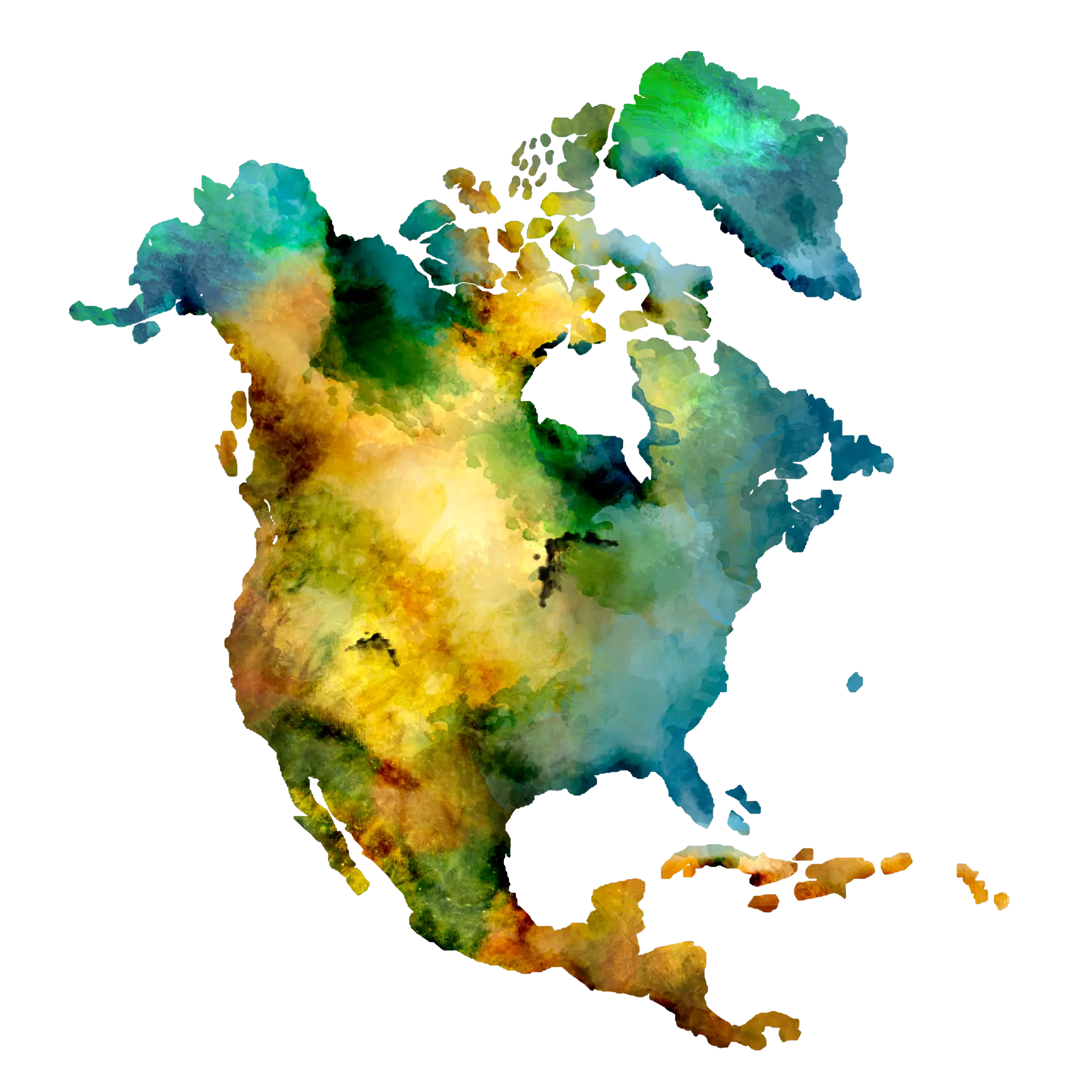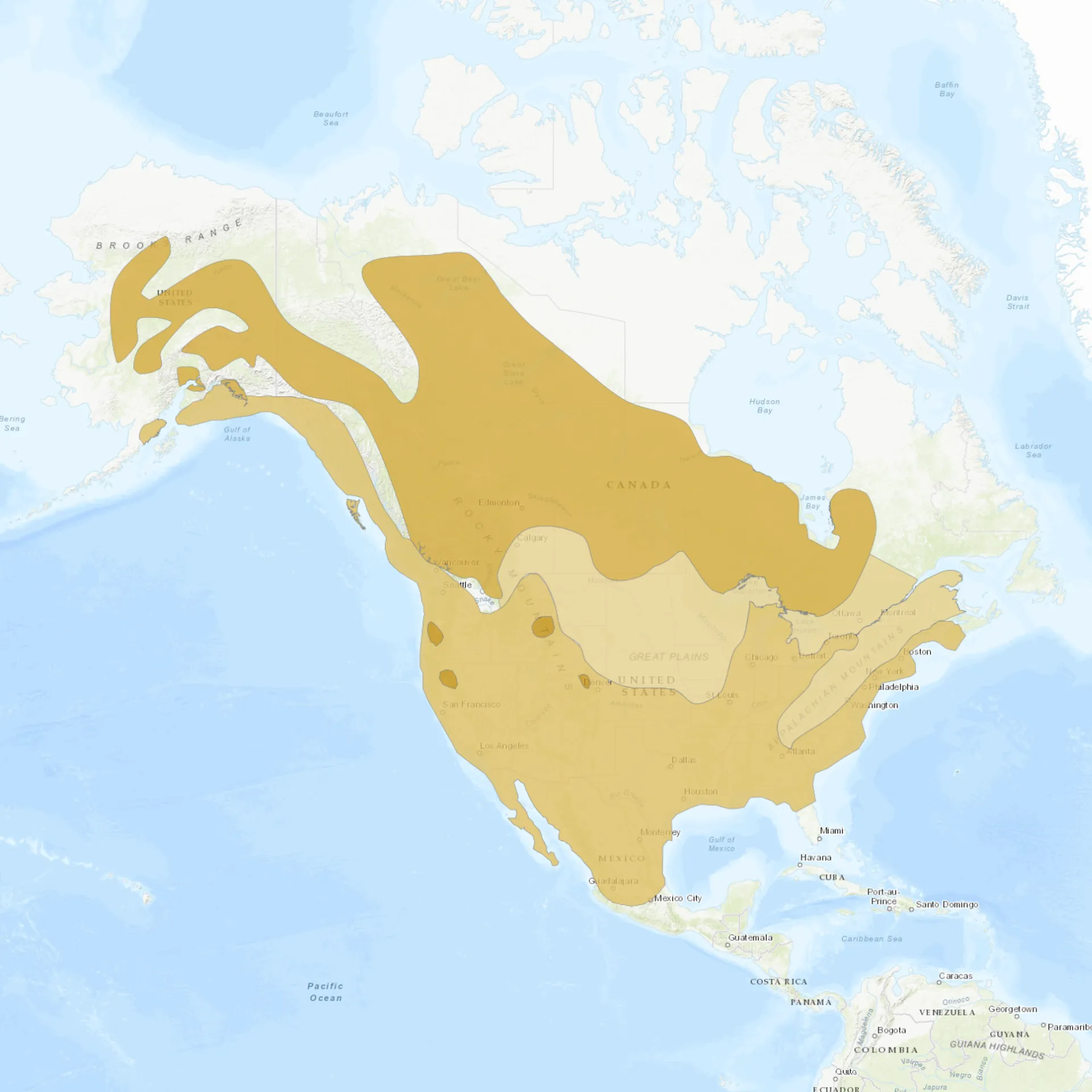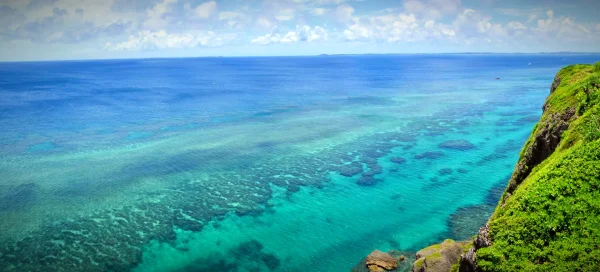Overview
The Bufflehead, scientifically known as Bucephala albeola, is a small North American diving duck known for its striking plumage and buoyant behavior. Males are particularly distinctive with their large, white, puffy heads marked with a glossy green and purple patch, contrasting with their black back. Females and juveniles are more subdued, with gray-brown plumage and a smaller white cheek patch. Buffleheads are among the smallest ducks in North America, making them easily distinguishable from other waterfowl.
Buffleheads breed in the forested areas of Alaska and Canada, nesting in tree cavities often created by Northern Flickers. Their strong preference for nesting in cavities near water bodies is a unique aspect of their ecology. During winter, they migrate to the coastal waters of the United States, favoring sheltered inlets and bays. These ducks are known for their agility in the air and underwater, often engaging in rapid, low flights over water and diving to catch small aquatic prey.
Buffleheads play an important role in the ecosystem in their breeding and wintering habitats. As predators of aquatic invertebrates and fish, they help control these populations and contribute to the aquatic food web. Their use of tree cavities for nesting also influences the availability of these resources for other cavity-nesting species, making them an integral part of their native environments.
Taxonomy
Kingdom
Phylum
Class
Order
Family
Genus
Species
Type
Current distribution:
Buffleheads have a broad distribution across North America, reflecting their migratory nature. In the breeding season, they are found in the boreal forests of Canada and Alaska. During winter, they migrate southward to the coastal and inland waters of the United States, with some individuals reaching as far south as Mexico.
Their distribution is influenced by the availability of suitable habitats, both for breeding and wintering. Habitat changes, such as the loss of nesting sites or changes in water quality, can impact their population distribution. Conservation efforts to protect critical habitats are essential for maintaining their population in the wild.
Physical Description:
Buffleheads are compact, round-headed ducks with a distinctive silhouette. Adult males have a striking appearance during the breeding season, with iridescent green and purple heads, a large white patch extending from the eye to the back of the head, and a contrasting black body. In contrast, females and non-breeding males have more muted colors, with dark brown bodies and a smaller, oval white cheek patch.
The small size of Buffleheads sets them apart from other ducks, with males being slightly larger than females. Their bodies are buoyant and well-adapted for diving, with short, stubby wings that aid in agile flying. Their bill is short and dark, and their legs are set far back on their body, an adaptation for diving. During flight, their rapid wingbeats and low, swift pattern over the water are characteristic behaviors.

Lifespan: Wild: ~3 Years || Captivity: ~18 Years

Weight: Male: 1.0-1.3 lbs (450-600 g) || Female: 0.9-1.2 lbs (400-550 g)

Length: Male: 14-16 in (36-40 cm) || Female: 13-15 in (33-38 cm)

Wingspan: Male & Female: 21-22 in (53-56 cm)

Top Speed: 50 mph (80 km/h) in flight
Characteristic:
Native Habitat:
Buffleheads are native to North America, with their breeding range extending across the boreal forests of Canada and Alaska. They prefer nesting in tree cavities near freshwater lakes, ponds, and rivers. The availability of suitable nesting sites, such as cavities created by woodpeckers, is a critical factor in their habitat selection.
During the non-breeding season, Buffleheads migrate to coastal and inland water bodies across the United States. Their winter habitats include sheltered bays, estuaries, and inland lakes, where they can find ample food and protection from harsh weather. The seasonal migration between breeding and wintering habitats is a significant aspect of their life cycle, demonstrating their adaptability to different environments.
Climate Zones:
Biomes:
Biogeographical Realms:
Continents:
Countries:
Diet:
Diet & Feeding Habits:
Buffleheads are diving ducks, primarily feeding on aquatic invertebrates such as insects, crustaceans, and mollusks. They are adept at diving and foraging in shallow waters, using their compact bodies and strong legs to propel themselves underwater. Their diet varies seasonally, with a greater emphasis on animal prey during the breeding season and more plant material, such as seeds and aquatic vegetation, consumed in the winter.
In addition to their primary diet, Buffleheads may occasionally feed on small fish and fish eggs. Their foraging strategy involves quick, shallow dives lasting less than 30 seconds. They are often seen in small flocks, foraging together in their wintering grounds. The efficiency of their foraging behavior is crucial for their survival, especially during the cold winter months when energy conservation is essential.
Mating Behavior:
Mating Description:
Buffleheads are monogamous, often forming pair bonds during the breeding season. Courtship displays are elaborate, involving head-bobbing, wing-flapping, and vocalizations by the male to attract the female. These displays are typically performed on the water and are a critical part of the pair formation.
Buffleheads have a single brood per season, with the female laying 6-11 eggs. The eggs are incubated for about 28-33 days. The young can fly at about 50-55 days old, becoming independent shortly after that. Parental care is crucial for the survival of the ducklings, particularly in their early days when they are vulnerable to predators and environmental challenges.
Reproduction Season:
Birth Type:
Pregnancy Duration:
Female Name:
Male Name:
Baby Name:
Social Structure Description:
Buffleheads are social birds, often seen in small flocks, especially during migration and winter. They exhibit high social interaction, with flock members engaging in coordinated feeding and flying activities. During the breeding season, they become more territorial, with pairs maintaining exclusive areas around their nesting sites.
A combination of cooperative and competitive interactions characterizes their social behavior. Agonistic behaviors are observed, particularly among males during the breeding season. The formation of social bonds within pairs and among flock members plays an important role in their survival and reproductive success.
Groups:
Conservation Status:
Population Trend:
The population of Buffleheads is considered stable, with no significant long-term decline observed. Although localized fluctuations may occur, they are widespread within their range. Their ability to adapt to different habitats, including human-altered landscapes, contributes to their resilience.
Conservation concerns for Buffleheads include habitat loss, particularly the loss of suitable nesting sites due to deforestation. Water quality degradation in their wintering grounds can also impact their survival. Ongoing monitoring and habitat conservation efforts are important for ensuring the continued stability of their populations.
Population Threats:
The primary threats to Buffleheads include habitat loss and degradation, particularly affecting their nesting and wintering areas. Deforestation and development can reduce the availability of suitable nesting cavities. Pollution and changes in water quality in their wintering habitats can affect food availability and health.
Climate change poses a long-term threat, potentially altering their migratory patterns and the suitability of their habitats. Human disturbance, such as recreational activities in breeding and wintering grounds, can also impact their behavior and survival. Conservation efforts focus on addressing these threats through habitat protection and management.
Conservation Efforts:
Conservation efforts for Buffleheads include habitat protection and restoration, particularly focusing on their nesting and wintering areas. Ensuring the availability of suitable nesting cavities, naturally or through artificial nest boxes, is a key conservation strategy. Protecting wetlands and coastal areas from pollution and development helps maintain the quality of their wintering habitats.
Research and monitoring are important for understanding their population dynamics and the impact of environmental changes. Engagement with local communities and stakeholders is crucial for promoting conservation awareness and sustainable practices that benefit Buffleheads and other waterfowl species.
Additional Resources:
Fun Facts
- Buffleheads are one of the few duck species that almost exclusively use tree cavities for nesting.
- They are known for their fast and agile flight, capable of reaching speeds up to 50 mph.
- Buffleheads are among the last ducks to migrate south in the fall and among the first to head north in the spring.
- Their name “Bufflehead” derives from “buffalo-head,” referring to their disproportionately large heads.
- Unlike many other duck species, Buffleheads are rarely seen on land, spending most of their time on water.
- They can dive up to 12 feet underwater in search of food.
- Buffleheads are highly adaptable, often using man-made structures as nesting sites when natural cavities are unavailable.
- Their compact size allows them to take off almost vertically from the water.
- Buffleheads have excellent underwater vision, aiding them in hunting for prey.
- They are known for their strong pair bonds, with some remaining together across multiple breeding seasons.




















































































